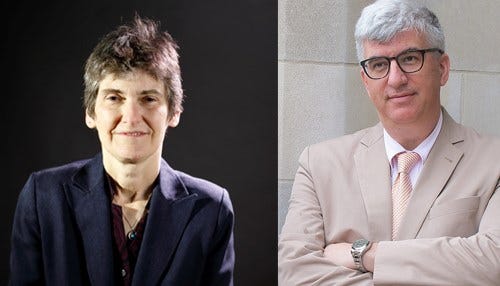A New Narrative For Climate Action In The Midwest

Subscriber Benefit
As a subscriber you can listen to articles at work, in the car, or while you work out. Subscribe NowIn recently celebrating the 49th Earth Day, our collective response to climate change and its impacts is evolving in a region where such change is not often expected: in the heart of the Midwest.
Consider the results of a new survey in Indiana. Eight out of 10 Hoosiers believe climate change is happening in some form. Seventy-five percent of Hoosiers support efforts to address its impact. What’s more, 65 percent of Hoosiers said they think that climate change is happening more so than they did five years ago.
This is telling.
Yet, perhaps it shouldn’t be surprising given an analysis of the geographic impact of climate change. Tapping data from the Climate Impact Lab, researchers at the Brookings Institution note that the impact of climate change will fall disproportionately on ‘red’ states and communities. And the Indiana Climate Change Impacts Assessment, produced by scientists from universities across Indiana, has compelling predictions of the changes here already and yet to come for agriculture, forests, water resources, and public health throughout the state. As a result, political gridlock on climate change may ultimately prove to be not so rigid after all.
Officials in Iowa have led a bipartisan embrace of wind energy and Saint Paul, Minnesota is divesting from fossil fuels. Responses like these are driven, in part, by the climate consequences already knocking on our door. In the same survey referenced earlier, 60 percent of Hoosiers report that they believe climate change is already starting to harm people in the U.S. and another 77 percent report that they expect climate change to negatively impact the Indiana economy.
Just in the last six months, the Midwest has experienced record-setting cold, snow and flooding. Shifting growing seasons, heavy rainfall and temperature variability are challenging farmers’ production and profitability. With this year’s floods causing $2 billion in damage to Iowa farmers alone, climate change landed a significant blow to the U.S. economy, which exported more than $116.2 billion in agricultural products in 2018.
The national climate assessment suggests projects these threats will continue, showing declines of up to 25 percent in yields for commodity crops in the southern Midwest, including corn and soybeans. And by mid-century, maximum temperatures are projected to noticeably exceed optimal conditions for many crops, approaching temperatures that may cause reproductive failure in crops like corn. The average temperature in Indiana has already risen 1.2 degrees Fahrenheit since 1895.
Yet, these latest survey results suggest that the public has been paying attention. We see greater support for the action needed to prepare and adapt to the effects of climate change—not just in national polling, but also here in the Midwest.
At minimum, there’s an increasing consensus that regardless of political partisanship, there’s no escaping the need to prepare for the threats climate change poses to communities and our economy. On flooding and protecting agriculture, there’s widespread support among Indiana residents for action and preparation.
As we begin to agree more and more on the nature of the problem, we can focus on solutions. At the top of our agenda is an increased focus on resiliency—what can be done to reduce our vulnerabilities.
A resilience-driven narrative calls us to lean into Midwestern pragmatism to predict the short- and long-term impact of climate change and identify the best ways to respond. For our colleagues at Indiana University—and for countless others across Big Ten country—that means capturing data and resources about carbon reduction opportunities and climate resilience efforts in ways that are easy for community leaders to access and act on. It means building tools that will help local governments measure and prioritize a response to their most urgent climate risks. And it also means that we have an opportunity to be boots-on-the-ground partners to communities across our states.
The tide is changing, and while the Twitterverse ponders the future of the Green New Deal, the Midwest may be quietly leading a much larger shift in American attitudes and action around climate change.
Janet McCabe is assistant director of policy and implementation for the Indiana University Environmental Institute. Jim Shanahan is dean of the Indiana University Media School.
